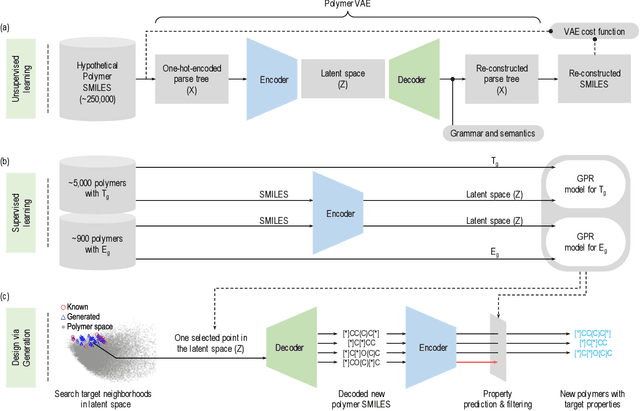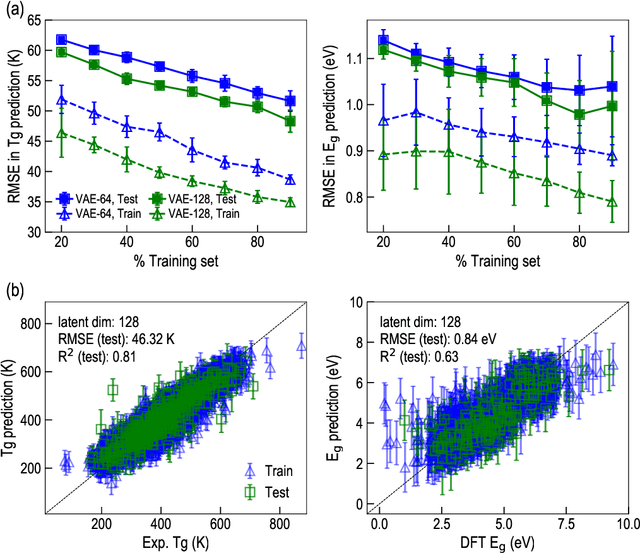Will R. Gutekunst
Polymers for Extreme Conditions Designed Using Syntax-Directed Variational Autoencoders
Nov 04, 2020



Abstract:The design/discovery of new materials is highly non-trivial owing to the near-infinite possibilities of material candidates, and multiple required property/performance objectives. Thus, machine learning tools are now commonly employed to virtually screen material candidates with desired properties by learning a theoretical mapping from material-to-property space, referred to as the \emph{forward} problem. However, this approach is inefficient, and severely constrained by the candidates that human imagination can conceive. Thus, in this work on polymers, we tackle the materials discovery challenge by solving the \emph{inverse} problem: directly generating candidates that satisfy desired property/performance objectives. We utilize syntax-directed variational autoencoders (VAE) in tandem with Gaussian process regression (GPR) models to discover polymers expected to be robust under three extreme conditions: (1) high temperatures, (2) high electric field, and (3) high temperature \emph{and} high electric field, useful for critical structural, electrical and energy storage applications. This approach to learn from (and augment) human ingenuity is general, and can be extended to discover polymers with other targeted properties and performance measures.
 Add to Chrome
Add to Chrome Add to Firefox
Add to Firefox Add to Edge
Add to Edge